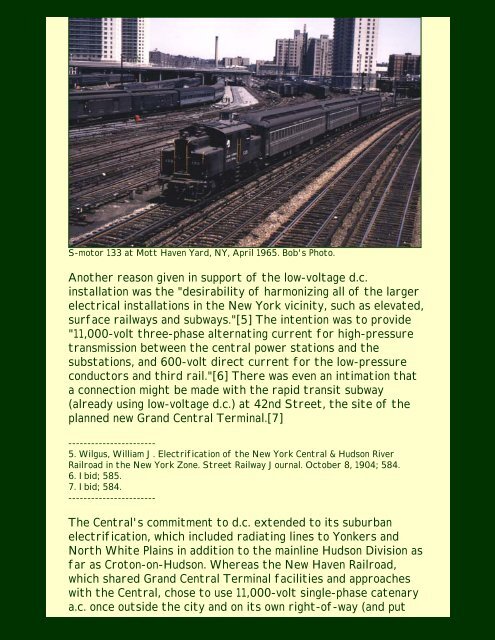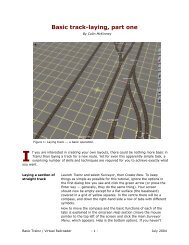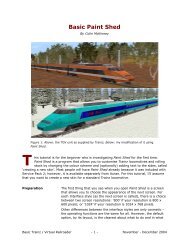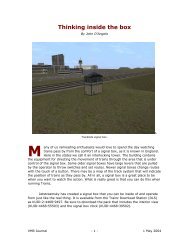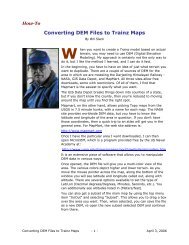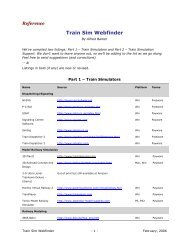Old Maude, Preface - Virtual Railroader
Old Maude, Preface - Virtual Railroader
Old Maude, Preface - Virtual Railroader
Create successful ePaper yourself
Turn your PDF publications into a flip-book with our unique Google optimized e-Paper software.
S-motor 133 at Mott Haven Yard, NY, April 1965. Bob's Photo.<br />
Another reason given in support of the low-voltage d.c.<br />
installation was the "desirability of harmonizing all of the larger<br />
electrical installations in the New York vicinity, such as elevated,<br />
surface railways and subways."[5] The intention was to provide<br />
"11,000-volt three-phase alternating current for high-pressure<br />
transmission between the central power stations and the<br />
substations, and 600-volt direct current for the low-pressure<br />
conductors and third rail."[6] There was even an intimation that<br />
a connection might be made with the rapid transit subway<br />
(already using low-voltage d.c.) at 42nd Street, the site of the<br />
planned new Grand Central Terminal.[7]<br />
-----------------------<br />
5. Wilgus, William J. Electrification of the New York Central & Hudson River<br />
Railroad in the New York Zone. Street Railway Journal. October 8, 1904; 584.<br />
6. Ibid; 585.<br />
7. Ibid; 584.<br />
-----------------------<br />
The Central's commitment to d.c. extended to its suburban<br />
electrification, which included radiating lines to Yonkers and<br />
North White Plains in addition to the mainline Hudson Division as<br />
far as Croton-on-Hudson. Whereas the New Haven Railroad,<br />
which shared Grand Central Terminal facilities and approaches<br />
with the Central, chose to use 11,000-volt single-phase catenary<br />
a.c. once outside the city and on its own right-of-way (and put


